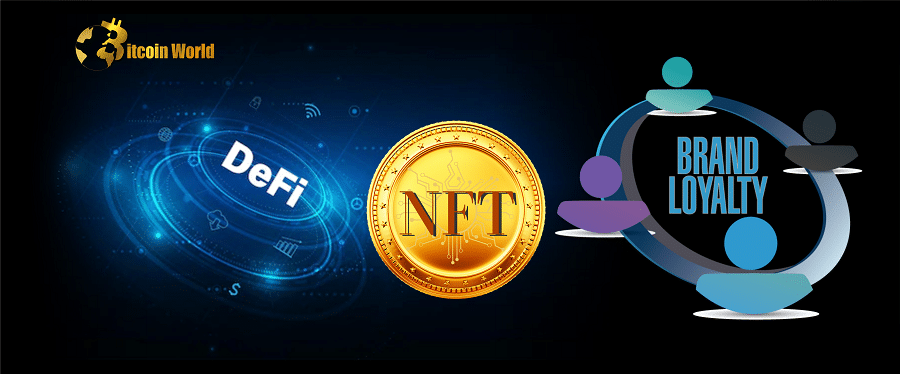With the NFT hype cycle of 2021 firmly in the rearview mirror, experts believe that in 2023, NFTs will power the next generation of consumer brand engagement, bringing new audiences to the metaverse.
Despite the fact that the non-fungible token (NFT) market is in deep decline, several key industry players believe that 2023 will be an opportunity to build new infrastructure in preparation for the next crypto bull market.
According to Forrester Research, non-fungible tokens (NFTs) will be a critical touchpoint for brands in the metaverse in 2023. NFTs are one-of-a-kind digital tokens that record the origin and ownership history of a physical or digital asset on a blockchain in an immutable manner.
While the vision of a metaverse has yet to be fully defined, let alone built, venture capitalist Matthew Ball defines it as “a massively scaled and interoperable network of real-time rendered 3D virtual worlds that can be experienced asynchronously and persistently by an effectively infinite number of users with an individual sense of presence, and with continuity of data, such as identity, history, entitlements, and so on.”
Corporate metaverse ambitions will most likely continue to rise in 2023, with companies such as Samsung, Nickelodeon, Gucci, and Nike building on 2022 efforts to revitalise their brands and attract new revenue streams.
Jeff MacDonald, a director at ad agency Mekanism, stated at the 2022 NFT.NYC conference in New York City that brands are offering exclusive privileges to their web3 customers, guaranteeing financial incentives or bragging rights. Starbucks has already pioneered an NFT-based brand loyalty programme that provides unique real-world rewards to holders of coffee-based NFTs. Nickelodeon is betting that nostalgic Rugrats profile pictures will bring back old fans to its Recur Forever Inc. NFT platform.
Nike is embracing a futuristic hybrid model that allows physical sneaker owners to outfit their avatars with the same gear as they do. This model is expected to gain popularity in 2023, with layer two solution Polygon proving appealing for corporate applications.
The Wall Street Journal reported at the NFT.NYC conference that many brands have long-term web3 plans.
NFTs also provide marketers with new ways to monetize and promote their products. In 2022, Pringles released an MP4 video NFT as part of its CryptoCrisp collection. McDonald’s launched an NFT collection in the United States to commemorate the reintroduction of its McRib product in December 2021.
Valentina Zakirova, a venture capitalist and Patreon supporter, believes that nonfungible token art creators will have unprecedented autonomy in 2023. As a result, artists will be able to fully monetize their work without the need for a middleman.
Band Royalty, a tokenized music platform, will add more artists to its 3,000 or so NFT-based song catalogue in 2023. Artists on Band Royalty are paid every time their song is played on a playlist.
The bear market of 2022 has put tokenized art to the test. Beeple, the author of “Everydays: The First 5000 Days,” a seminal nonfungible token work that sold for nearly $70 million in 2021, had to settle for another $252,000 bid at a Christie’s auction in mid-2022. Artists could use the concept of fractionalized NFT art to combat waning interest. Buyers can save money by purchasing an NFT representing a fractional ownership stake in the artwork.
Christie’s tokenized art sales of $5.9 million in 2022 were 96% lower than the $150 million in 2021. Regardless of lower sales, the British auction house is clearly interested in the intersection of art and blockchain technology. Christie’s launched a venture capital arm focused on web3 earlier this year. So far, it has invested in Layer Zero, a startup focused on blockchain interoperability.
Non-fungible tokens are likely to gain traction in the decentralised finance (DeFi) space as corporate investment becomes more widespread in 2023.
The authors of the forward-thinking DeFi book “Beyond Bitcoin: Decentralized Finance and the End of Banks,” Steven Boykey Sidley and Simon Dingle, believe that users may one day contribute an asset’s NFT as liquidity to a decentralised exchange’s liquidity pool. They could borrow cryptocurrency against that NFT and use it to invest in other yield-generating products.
Already, platforms such as NFTfi provide loans backed by NFT-based collateral. If the borrower defaults, the venue pays the loan in ETH, with the NFT going to the lender.
NFTs will also be used to tokenize licences and academic credentials, according to Dr. Jane Thomason. Kasei Holdings, a British digital asset firm, is chaired by Thomason.
In 2023, NFT-based credit scores could be a significant innovation. Charles Hoskinson emphasised the importance of developing a decentralised economic identity earlier this year. This type of identity will aid in realising the economic potential of those who have been excluded from traditional financial services.














